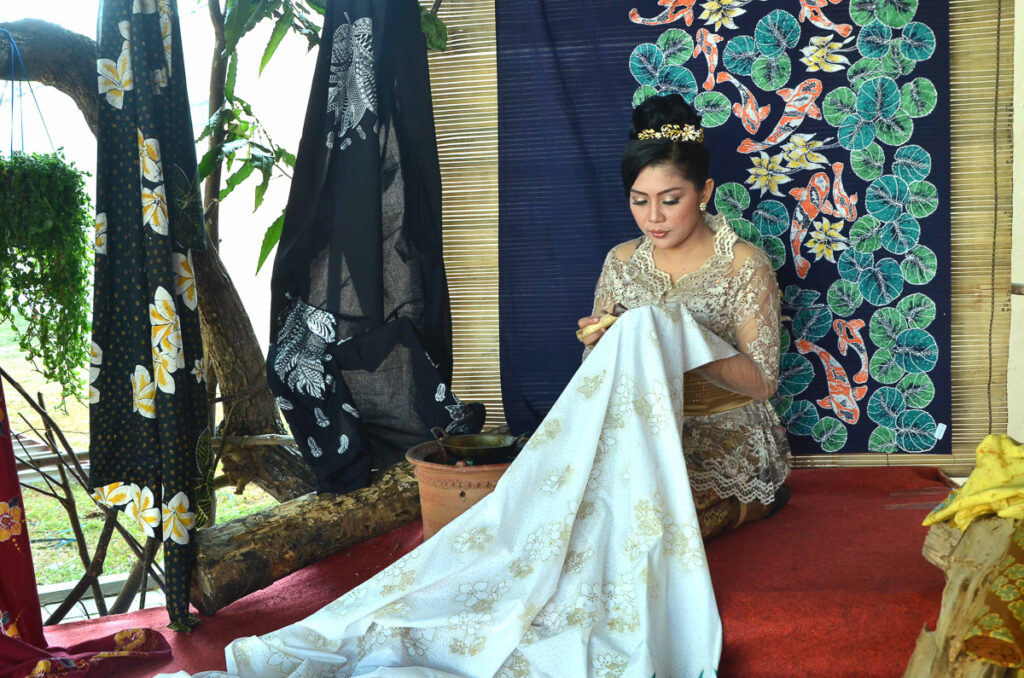
Janet Teowarang describes a successful program to introduce batik skills to factory workers
Last year, during the Alumni Grant Scheme training, I met two beneficiaries who were always dressed in factory uniform. Both of them tried to adjust their working time with me because they are looking forward to attending the classes in every training program. The beneficiaries were Ibu Nopi Purnawati and Ibu Dewi Prawiyana, factory workers at a local company in Baujeng Village. They were eager to learn about sustainability in fashion and textile, especially natural dyeing, eco-printing process, and techniques.
Ibu Nopi and Ibu Dewi are also batik artisans and told an impressive story about their plan to develop Sanggar Batik Batara from the Business Model Canvas that used in training.
I initially thought that both of them were the owners of the studio, but in fact, it was the local factory company, PT. BMKU , which established Sanggar Batik Batara as a place of training, workshop, and gallery to support local community development as well as women empowerment. PT BMKU is the agricultural processing factory company established in year 1999 by Pak Gunawan Wibisono with about 1,600 factory workers where 80% are women.
Nevertheless, the place is quite convenient; Sanggar Batik Batara is located on Jalan Raya Pandaan Bangil in Baujeng Village, Pasuruan Regency, East Java within the same complex as the local company factory. Furthermore, Baujeng Village has a similar cool climate as other villages in the Pasuruan Regency.
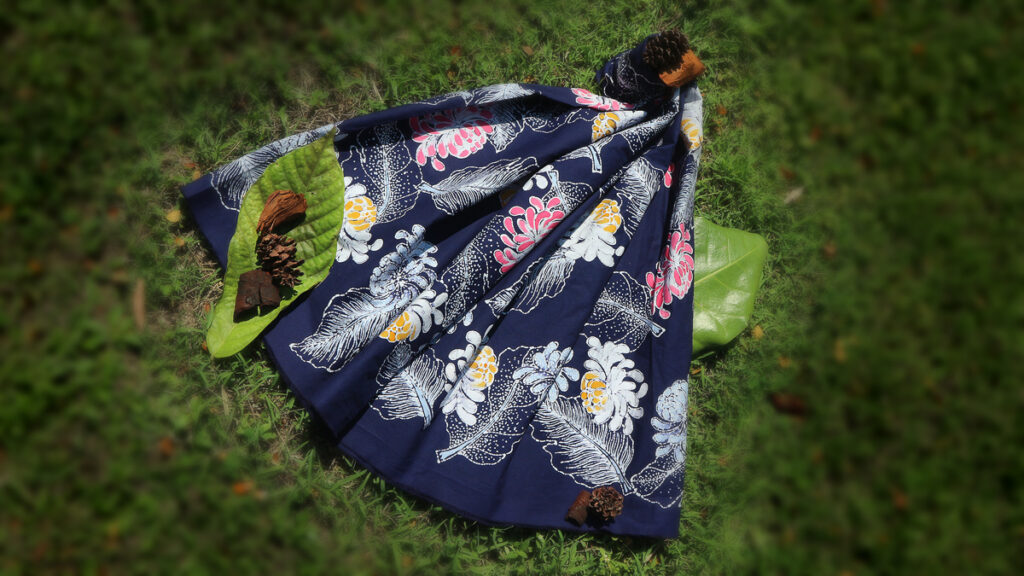
Sanggar Batik Batara was founded in 2014 with a vision to raise global awareness of the original Indonesian creations made by our creative industry. Meanwhile, the studio’s mission includes preserving Indonesian art and culture, creating local products with international standardisation, developing talent for the art of hand-made batik or batik tulis, improving the standard of living, acknowledging the talented and skilful factory workers also who integrated with the development of technology.
Sanggar Batik Batara is also aiming to become the triumph of Indonesia art and culture in the national and global market. From its beginning, Sanggar Batik Batara provided opportunities to the interested and talented factory workers from the local agricultural company to develop themselves by learning a hand-made batik process. Ibu Nopi and Ibu Dewi were among the first batch of Sanggar Batik Batara, whereas now they are handling the workshop as trainers. The studio has nine artisans from two main trainers, one part-time trainer Ibu Nur Fitriyah and six members where the other six artisans are Nur Hayati, Dian Pratiwi, Arie Santi, Endang Sri Rahayu, Sri Rahayu Slamet, and Ikrimah.
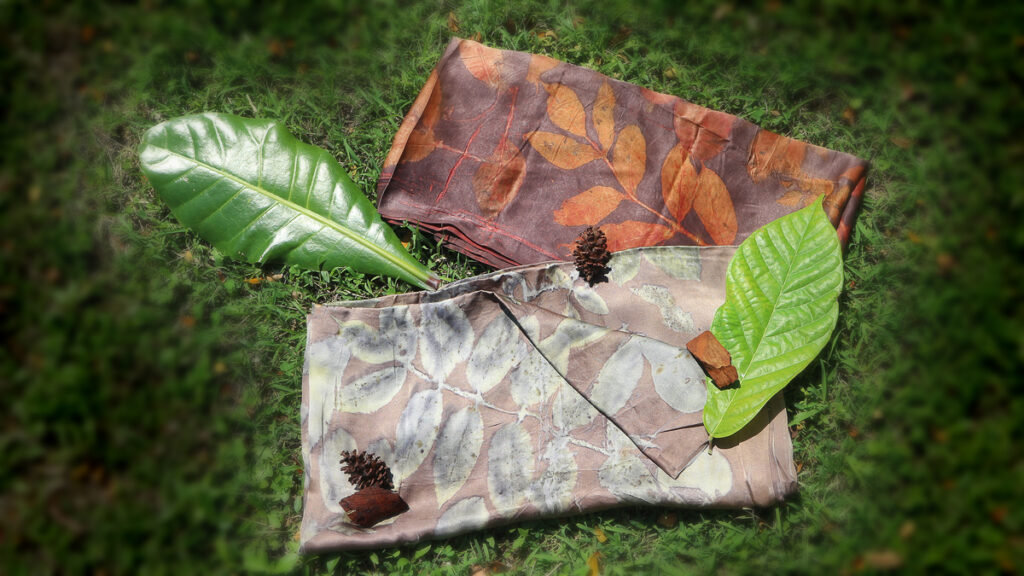
Sanggar Batik Batara has provided a series of batik training classes from beginner to advanced level. For instance, the beginner class offered the introduction of hand-made batik at the beginning. Later, tools and materials are introduced, including the practice process of using canting and batik malam to draw or mencanting into 21 x 23 cm of Primis Cotton. Afterwards, at beginner class also has the opportunity to practice ngelorod, the final stage of batik making process, in which batik malam is released into a hot water bath.
At the intermediary level, students graduate to a larger canvas, 60 x 115 cm of Primis Cotton, also needs to develop the type of motif into more challenging ones. The final level is the advanced class with more challenging practice on 215 x 115 cm of Primis Cotton. Besides the training schedule, the batik making process operates daily where artisans work at Sanggar Batik Batara 2 to 5 pm every day after they have finished the working schedule at the local factory. The studio also has the arrangement of customer orders and internal monthly targets to produce 100 pieces of batik cloth per month. The target setting is important since the studio must be productive and keep the performance spirit of all artisans.
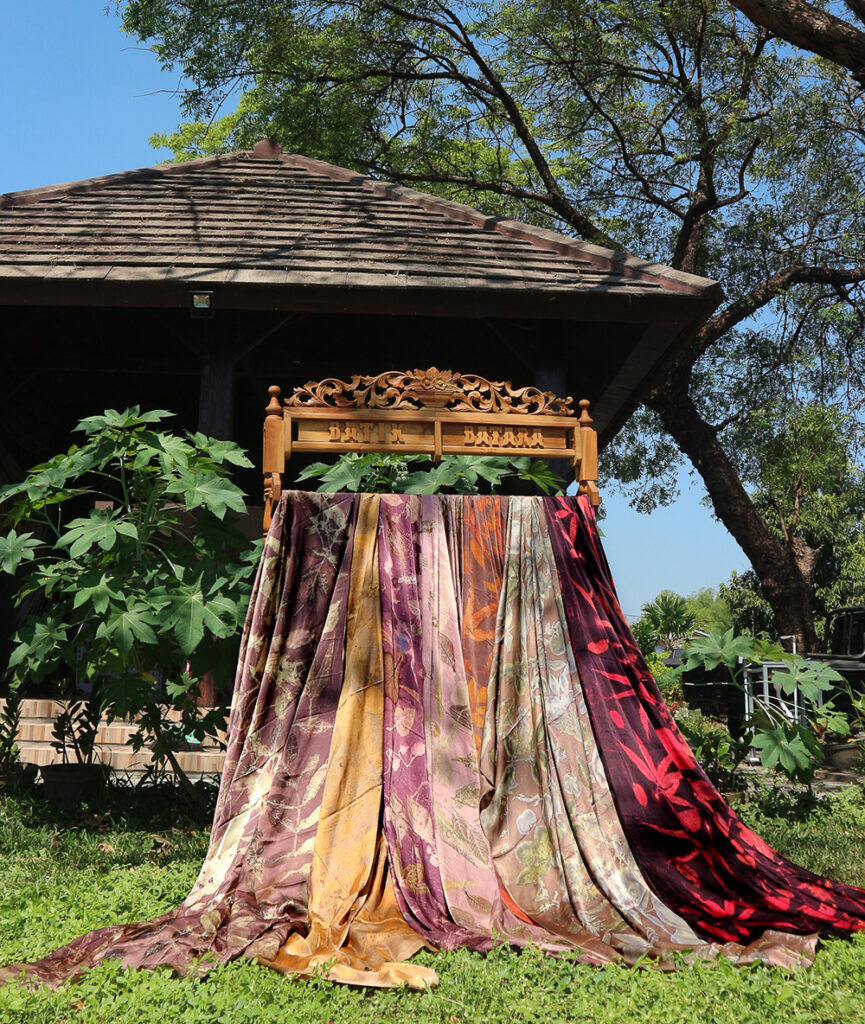
The characteristic batik motif of Sanggar Batik Batara is tobacco or tembakau (Nicotiana) and clove or cengkih/cengkeh (Syzygium aromaticum) since there are cigarette factories around the neighbourhood of the studio. Besides, Pasuruan Regency’s characteristic Tuberose flower (Polianthes tuberosa), chrysanthemum flower (Chrysanthemum indicum), and Pananjakan Bromo motifs are among the distinctive designs on Sanggar Batik Batara Batik’s creations.
The studio’s latest innovation is an eco-printing motif, which aims to explore the richness of natural resources, as well as preserving rare plants’ leaves into cloth. To achieve a good and satisfying quality result of eco-printing motifs, it is important to choose the leaves with thick layers or fibres that can produce sharp motifs with absorbing brighter colors. Sanggar Batik Batara has also using cloves or cengkih or cengkeh (Syzygium aromaticum) that are boiled as the natural dye in combination with lanang (Oroxylum indicum) and teak (Tectona grandis) leaves for the motifs. For other natural dyed colors, the studio uses secang (Biancaea sappan) to achieve soft red colour, jolawe (Terminalia bellirica) for getting soft greenish-yellow to darker yellow, and many other references.

The studio’s latest creation of hand-made batik is blended with eco-printing motifs where the artisans are required to combine the suitable plant leaves with the batik motif designs as well as the colors. Sanggar Batik Batara has delivered neat, adequate batik and eco-printing experimental designs where this is the right step to introduce the Pasuruan Regency’s creative culture to global audiences for the quality of local creation. I hope when East Java slowly recovers from the COVID-19 pandemic, there is the opportunity for local and foreign tourists to learn Batik making at Sanggar Batik Batara when visiting Pasuruan Regency.
Author
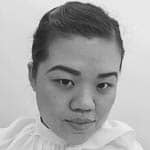
Janet Teowarang is a founder and creative director of her own fashion brand, Allegra Jane. She is also a lecturer at Universitas Ciputra Surabaya. Janet is one of batch two alumni from Australia AwardsIndonesia Short Term Awards of Fashion and Textile sector and Alumni Grant Scheme recipient. She loves the history of fashion, world art and crafts, very excited visiting every museum when she travels around the world.


Comments
Thanks for finally writing about > Sanggar Batik Batara in Baujeng Village | Garland Magazine < Loved it!
My blog meeyland